BERLINER DOM .
Berlin, Germany
. 7" x
9"
x 5 1/2"
tall
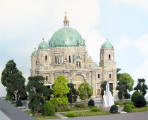 |
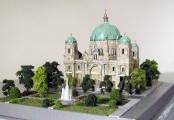 |
 |
|
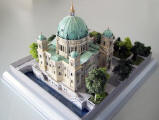 |
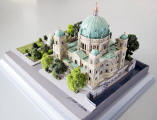 |
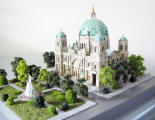 |
|
BERLINER DOM .
Berlin, Germany
. 7" x
9"
x 5 1/2"
tall
 |
 |
 |
|
 |
 |
 |
|
|
BERLINER DOM. This magnificent building is located in the heart of the German capital on Museum Island. With its imposing architecture, the four towers, the 328 foot high dome and the golden cross, it is the largest Protestant church in Germany and one of the most important dynastic tombs in Europe. It also has become one of Berlin's top 10 landmarks and tourist attractions. The original structure on this site was Castle Chapel for the Berlin City Palace, dating back to 1451. In the early 19th century, architect Karl Friedrich Schinkel transformed the court church into a neo-classical building. Five years later, upon Wilhelm II's ascension to the throne in 1888, he wanted the church to appear more elaborate in keeping with the monarchy's power and prestige. Architect Carl Raschdorff designed the opulent new church to equal that of Saint Peter's in Rome and Saint Paul's in London. The foundation stone was laid in 1894 and eleven years later the new church was consecrated. The style is Renaissance and Baroque Revival. Berliner Dom contains the HOHENZOLLERN Royal Crypt which is the final resting place of Frederick William I, as well as over a hundred other German Royals. In addition to church services, the cathedral is used for state ceremonies, concerts, and other events. Over a hundred concerts and events take place every year. The church was severely damaged during WW2. After the division of Germany, the Berliner Dom was in the EAST Berlin section and the work on restoring it began there, in a simplified form, in 1975. Full restoration was only completed in 1993, four years after the Berlin Wall came down and the west took over the restoration.
|
|||
|
| CLOSE THIS PAGE |